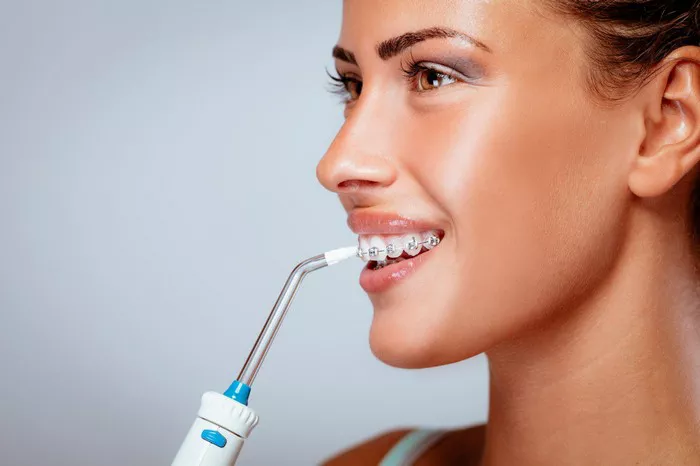Maintaining a healthy mouth goes far beyond just brushing your teeth. Flossing plays a crucial role in removing plaque and food debris between teeth where a toothbrush cannot reach. While traditional string flossing has been the standard for decades, water flossers are gaining significant popularity due to their ease of use and effectiveness. This article explores what water flossers are, how they work, their benefits, and how to incorporate them into your daily routine for optimal Oral Health.
What Is a Water Flosser?
A water flosser, also known as an oral irrigator, is a dental device that uses a steady or pulsating stream of pressurized water to clean between teeth and along the gumline. The device typically consists of a motor with a pump, a water reservoir, and a specialized nozzle that directs the stream of water. By flushing out food particles and plaque, a water flosser enhances oral hygiene and supports overall Dental Care.
Types of Water Flossers
Water flossers come in various models to meet different needs and preferences:
Countertop Models: These are powerful units that offer multiple pressure settings and large water reservoirs. They are ideal for home use.
Cordless Models: Battery-operated and portable, perfect for travel or small bathrooms.
Shower Flossers: Attach to your showerhead and use water pressure directly from the shower.
Faucet-Connected Flossers: Connect directly to the sink faucet and do not require batteries or electricity.
How Do Water Flossers Work?
Water flossers function by using pressurized water to dislodge debris and plaque. The pulsating action helps massage the gums and stimulate circulation, which promotes gum health. When used correctly, they can reach deep into periodontal pockets and are especially effective in cleaning around dental work like braces, bridges, and implants.
Benefits of Using a Water Flosser
Incorporating a water flosser into your daily routine can offer numerous benefits:
Effective Plaque Removal: Studies show that water flossers can remove up to 99.9% of plaque from treated areas.
Improved Gum Health: Regular use reduces bleeding and inflammation of the gums.
Easy to Use: Especially helpful for people with limited manual dexterity or those who dislike traditional floss.
Gentle on Gums: The gentle water stream is less abrasive than string floss, reducing gum trauma.
Convenient for Braces and Implants: Reaches areas that are hard to clean with string floss, particularly around orthodontic appliances.
Water Flossers vs Traditional Floss
Comparing water flossers to string floss highlights their unique strengths:
| Feature | Water Flosser | String Floss |
|---|---|---|
| Ease of Use | High | Moderate |
| Effectiveness with Braces | Very effective | Less effective |
| Risk of Gum Damage | Low | Moderate to High |
| Time to Use | Quick | Moderate |
| Portability | Limited (except cordless models) | High |
Who Should Use a Water Flosser?
Water flossers are suitable for nearly everyone, but they are particularly beneficial for:
- Individuals with braces, bridges, crowns, or dental implants
- People with arthritis or limited hand strength
- Patients with gum disease or sensitive gums
- Children who resist string flossing
How to Use a Water Flosser Effectively
Follow these steps to ensure maximum benefit from your water flosser:
- Fill the reservoir with lukewarm water.
- Choose a suitable tip and attach it to the device.
- Lean over the sink and place the tip in your mouth before turning the device on to avoid splashing.
- Start with the lowest pressure setting and gradually increase as needed.
- Glide the tip along the gumline, pausing between teeth for a couple of seconds.
- Empty the reservoir and clean the device after use.
Common Mistakes to Avoid
To achieve the best results and prevent damage, avoid the following:
Using water that is too hot or cold: Use lukewarm water to avoid gum irritation.
Pointing the tip directly at the gums: Angle the tip slightly for a gentle flow.
Skipping traditional floss entirely: While water flossers are effective, combining them with occasional string flossing may offer even better results.
Maintaining Your Water Flosser
To keep your device working efficiently:
- Rinse the reservoir daily and let it air dry.
- Clean the tip every week by soaking it in a mixture of water and vinegar.
- Replace the tip every 3–6 months or sooner if the spray becomes weak.
FAQs About Water Flossers
Q: Can I use mouthwash in a water flosser?
A: Yes, but it’s recommended to dilute it with water to prevent internal damage to the unit.
Q: How often should I use a water flosser?
A: Daily use is recommended, ideally after brushing your teeth.
Q: Are water flossers safe for children?
A: Yes, children over the age of 6 can use them under supervision. Some brands offer child-friendly models.
Q: Can water flossers replace brushing?
A: No. They are a supplement to, not a replacement for, regular toothbrushing.
Top Brands and Models to Consider
Here are some of the most trusted water flosser brands:
Waterpik: Widely considered the gold standard with ADA approval.
Philips Sonicare AirFloss: Combines air and micro-droplet technology.
Oral-B Aquacare: Known for gentle pressure and ease of use.
H2ofloss: Offers a budget-friendly and highly effective option.
Conclusion
If you’re looking to improve your dental hygiene, investing in a water flosser is a smart decision. With the ability to clean hard-to-reach areas, reduce plaque, and support healthier gums, they offer unmatched convenience and efficacy. Whether you have braces, implants, or simply want a cleaner mouth, a water flosser is a valuable tool in your dental care arsenal.
Related topics

